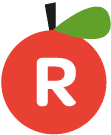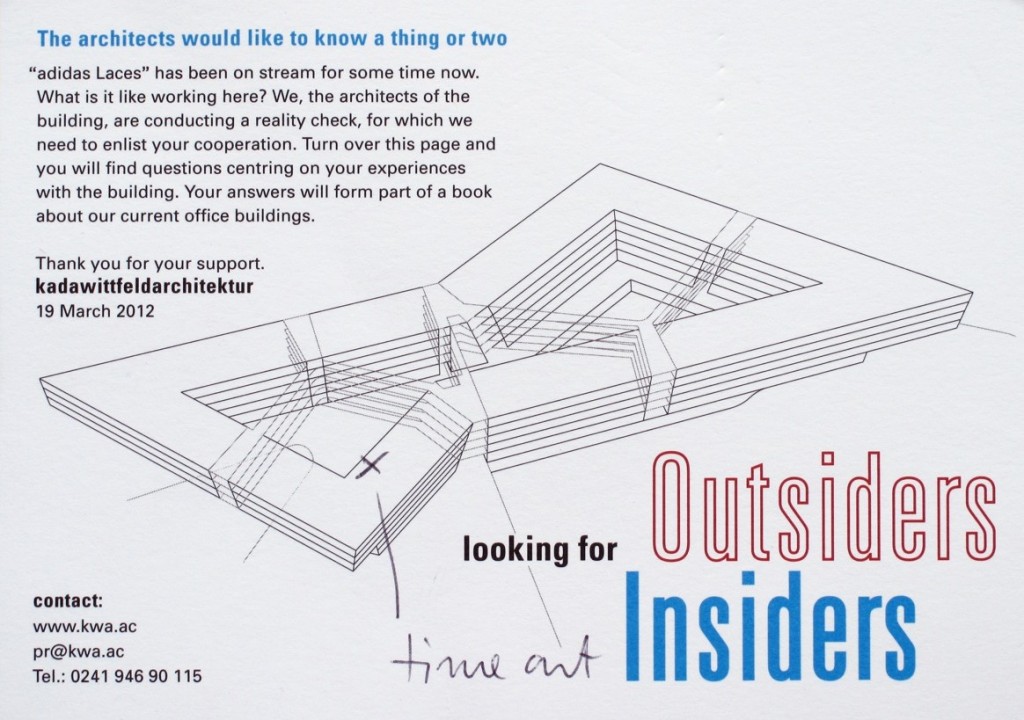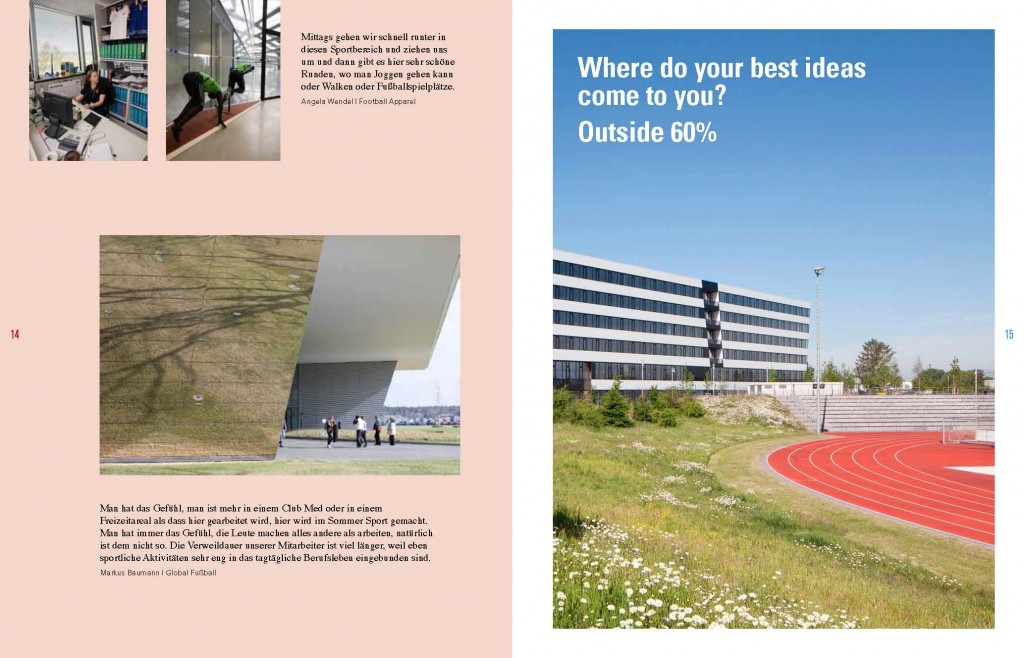My recent lecture for Shapeshifters in Brussels, provided me with a good excuse to look at my work from the last decade and try to make sense of it all. Am I still the same designer as ten years ago? No, I have changed and so has the design world around me. Roughly, I would sum up this change as a move from form to process.

Since 2003, Johan van Looveren and Inge Gobert from Sint Lukas Hogeschule in Brussels, have invited graphic designers for their annual lectures to talk about their approach to information design. When they asked me, it was the first time I thought about my scenographic work and book projects as information design. Have I been designing information? If so, where did this information come from, what did I do to it and why? To answer these questions I had to go right back to the Bauhaus, because for me it all started with the Bauhaus.

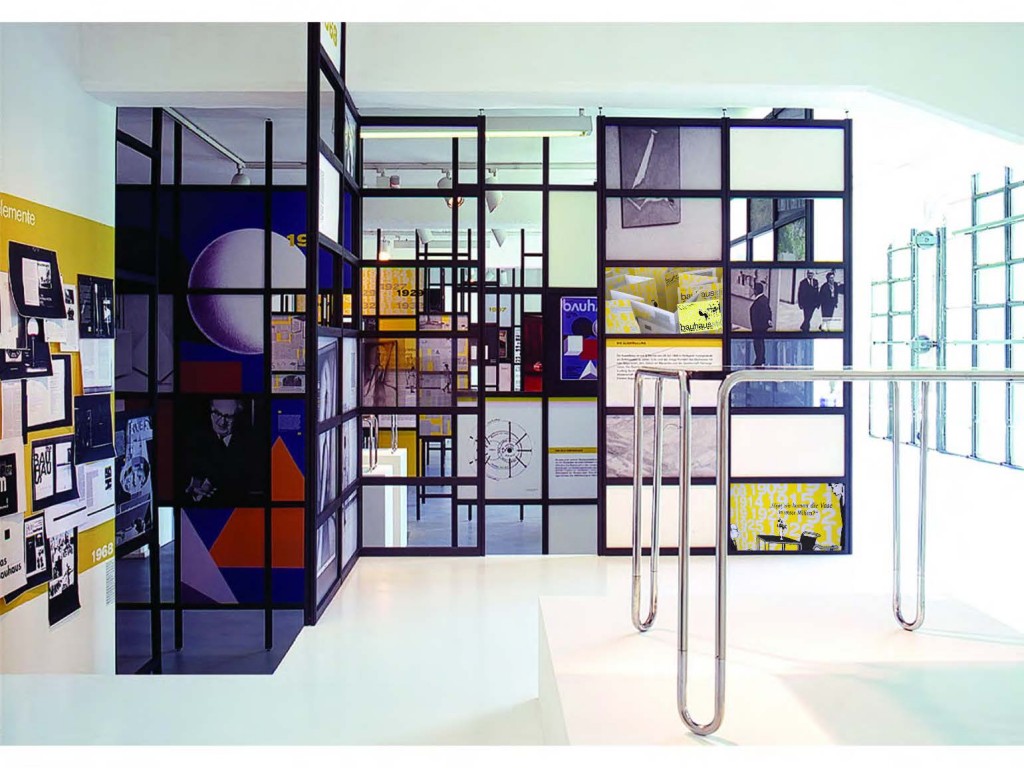
One of the first exhibitions I ever worked on was Bauhaus Style at the famous building in Dessau. By the time this opportunity arose, I had already come a long way. Originally starting off as an illustrator, I was quickly frustrated by the limited scope of a typical commission: “Your drawing here, please.”. What about the rest of the page? What about the article, the magazine, the series, the brand? My constant urge to design an ever bigger context was finally matched by the design brief: create an environment. In an exhibition the things that are exhibited plus the exhibition design embedding them into a context, constitute together what you might call “the information”. It is transmitted over a range of different channels simultaneously. To design these parallel levels, you obviously need more than one design discipline. The idea that all design disciplines work together towards one vision, their “cathedral”, was first propagated and put into action at the bauhaus. One could say, that scenography or integrated design itself started with the bauhaus.
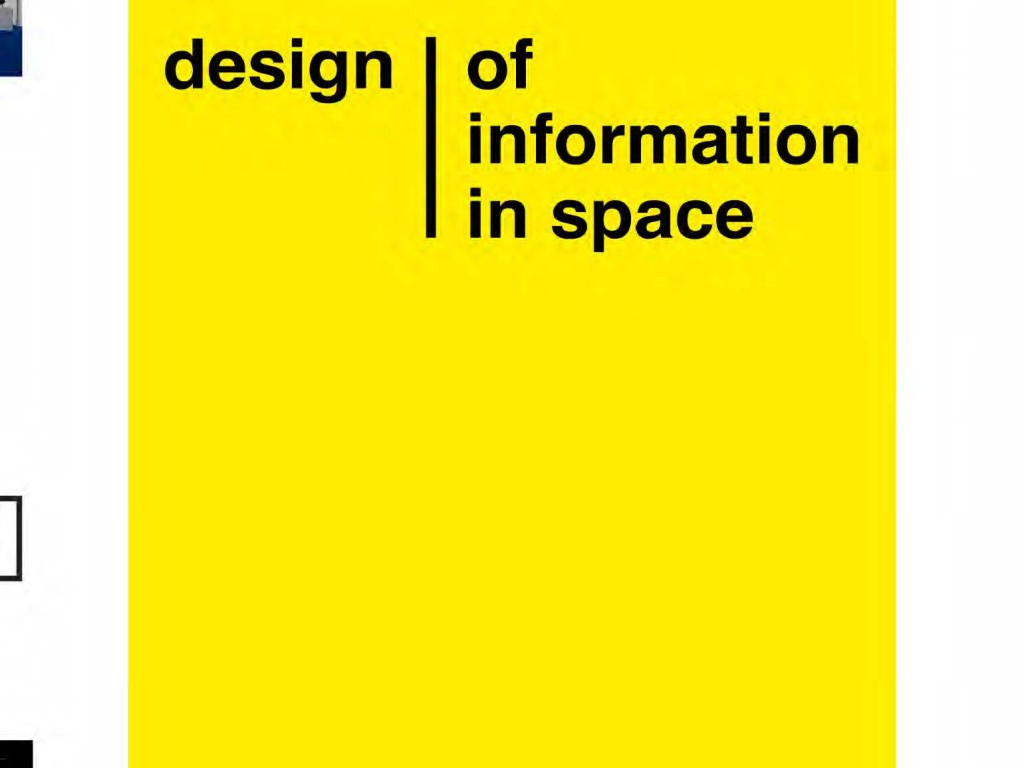

An exhibition is not a linear 3-D book that you read from A-Z in order to learn something. In the exhibition Andy Warhol. Other Voices, Other Rooms that originated in the Stedelijk Museum and travelled from there to Stockholm, London and Columbus/Ohio, that would have been an impossible undertaking anyway. In the spirit of „All is pretty“ (Andy Warhol) the show combined 871 works in 33 media. In order to view all time based media alone, it would take a visitor close to 68 hours.
An exhibition is a world that you enter, and you experience information rather than reading it. A narrative space can convey meaning in a more direct and sensual way than a book. The defining difference seems to me the physical presence of the visitor and his movements around the space.
Information gets altered not only by what is exhibited and how, but also by the way the visitor moves around the space, the time she spends there and the way she feels while being there. Thus, the design of an exhibition is not comparable to designing a static object or a theatre stage, but is more akin to city planning or service design.
This is why information in exhibitions is context sensitive. Let´s take for example the filmscape in the same exhibition where 21 films run simultaneously in a sound absorbing camouflage landscape. The arrangement allows for a comparative filmic experience, very appropriate for Warhol´s highly experimental films, that range from short camp movies to nine hours footage of the Empire State building filmed in one night.


The physical sensation of walking and lying around in films is impressive enough, but an interested visitor might like to know what exactly he´s watching. This is usually solved by sticking a label somewhere, but here it is dark and you wouldn´t be able to read a normal label in the dark. That´s why we enlarged the information on each film and put it on those big panels on the walls. These panels show you title, actors and duration of each film. But one problem, that people usually have with time based media in exhibitions remains: how do you know at what point the film is right now? To solve this problem, we incorporated a timecode into each panel, showing you the exact position of the film.



A different situation in the TV scape, which displays all 42 TV Shows by Andy Warhol on individual screens. Here the star seats hold the information. The visitor is literally sitting on the information, as only one person can watch one show at one given moment. People have to move around the room to view a different episode, they are switching channels with their bodies. The way information is presented makes them do that. Seen from the outside, the visitor almost becomes an exhibit in himself, luring other visitors inside the American Flag thus completing the exhibition design.
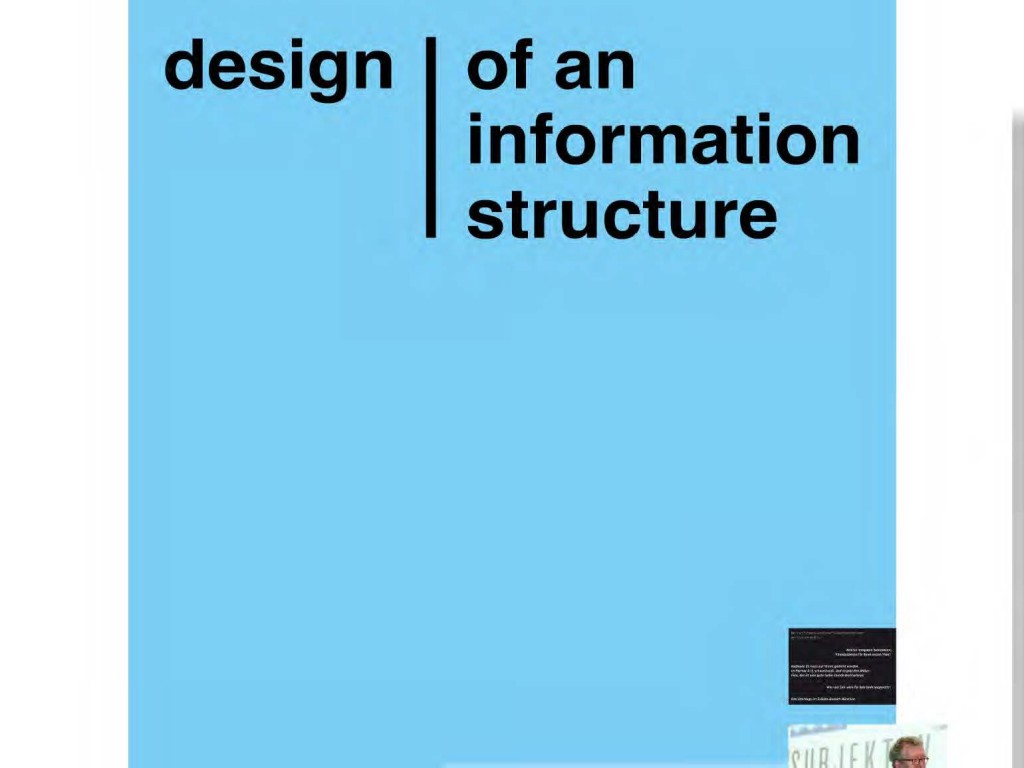
To give a visitor information he needs at a specific moment is one strategy, another is to provide him with a tool that enables him to navigate independently around complex information environments. The exhibition Subjective aimed to portray a generation of documentary filmmakers from the Film and TV school in Munich in the neighbouring Pinakothek der Moderne, allowing for an interdisciplinary exchange on the nature of the documentary in art and filmmaking.

The advantage of doing this in an exhibition as opposed to a film festival or a DVD set, is the possibility to let visitors see everything at once. The overview took place in the main exhibition room, where 88 documentary films were simultaneously shown, each film on its own white museum style socle. Projected by a mini beamer, the size of a pack of cigarettes, unto small plexi screens, each film thus had its own tiny cinema situation to itself.

The visual floorplan shows the rigid grid on which the films were arranged. Vertically you have a number system, horizontally each row represents a curatorial group with titles like “conflict”, “border” e.t.c.. In the accompanying fold out map, the visitor can search for films by different categories, such as director, film title or subject matter. Just like on a city map, the visitor is given the coordinates of the particular film, he has thus chosen.


For younger people that were raised on the internet, the navigation of complex information and being offered alternative routes for personal explorations, seems natural. For the designer, the main feat is a usability challenge. How do you design an easy to grasp system that allows people to explore on their own? But this scenographic approach also has a wider impact, it subverts the hierarchical roles of curator and visitor, of expert and laymen to allow for a more democratic interaction between equals.


But there are different types of information. There is the type of information that spells “This way to the toilet” or “Max Ernst was born in 1891”. But what about how his works feel or what it means? In the comprehensive Max Ernst retrospective Max Ernst. Dream and Revolution at the Moderna Museet and the Louisiana Museum of Modern Art, the curators wanted to show that Max Ernst influence on contemporary aesthetics and thoughts, is much greater than commonly acknowledged. How can you make people get a glimpse of these curatorial ideas, beyond using textual means? How can somebody that only walks through an exhibition without reading a single label or text experience Max Ernst as a contemporary, not just as an exponent of the historic surrealist movement?

To give the exhibition a contemporary feel, without scaring off the rather conservative (when it comes to exhibition scenography) art crowd, we worked exclusively with museum means: white walls and lighting. The freestanding walls form different types of rooms, connecting and structuring the works loosely, while coloured lights aimed at the ceiling indicate the four sections of the exhibition. Each colour represents one of the four different places where Max Ernst lived and worked: the early Dada works in Germany are signalled by green light, his French works hang under a pink sky, the American ones in a yellow aura and his return to Europe in the fifties glows blue. The labels emanate the same coded colours, achieved by simply sticking coloured paper on the back of the labels and attaching them in a little distance to the wall.

Even the catalogue emits coloured light from the spine, subtly illuminating the different sections. Vague information needs artistic rather than rational means.
So far the information as subtle as it may have been, has had a reliable source. It was usually provided by curators, which are experts in their particular fields. But increasingly, the roles of information provider and information consumer in my projects have become more fluid.
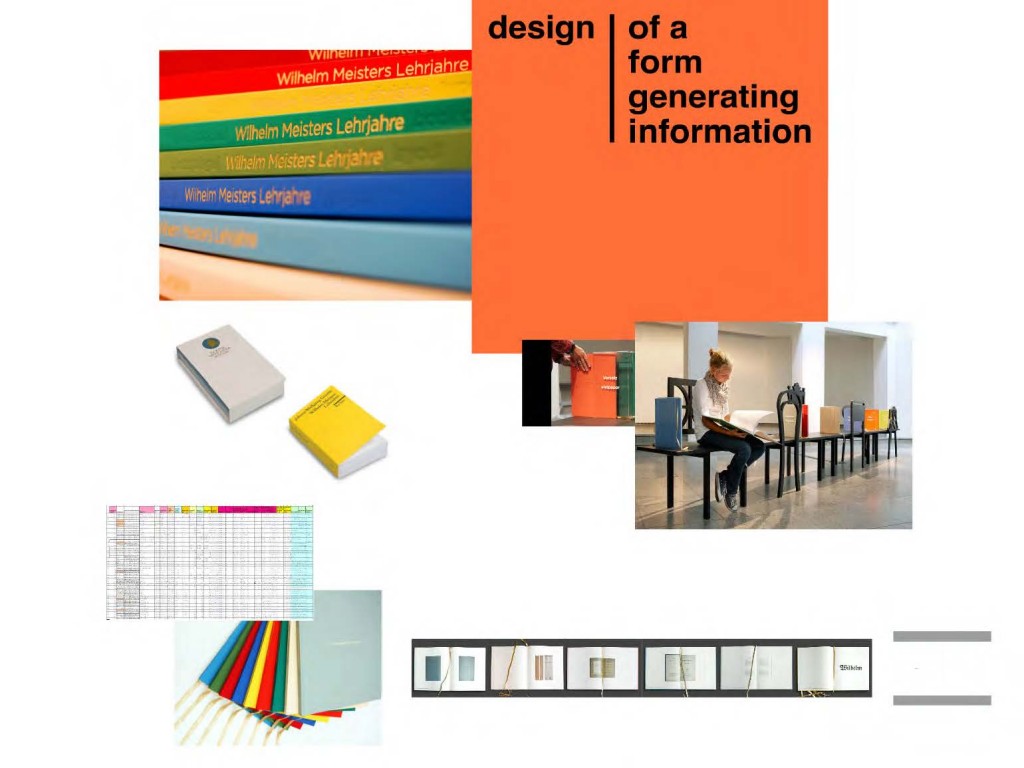
Examples are the Wilhelm Meister exhibition, where new knowledge was generated by the scenographic form. The exhibition books make information visible, that has not been visible before, even to the experts. They show aspects of the Goethe Book, which go beyond the usual literary objects of study and provide new entry points to the book, even to people that are not familiar with the text.

Or take the book project Arbeitende Orte (transl. Working Places) with Angelika Fitz, where we first designed a process, in order to collect the information that would subsequently form the content of the book.
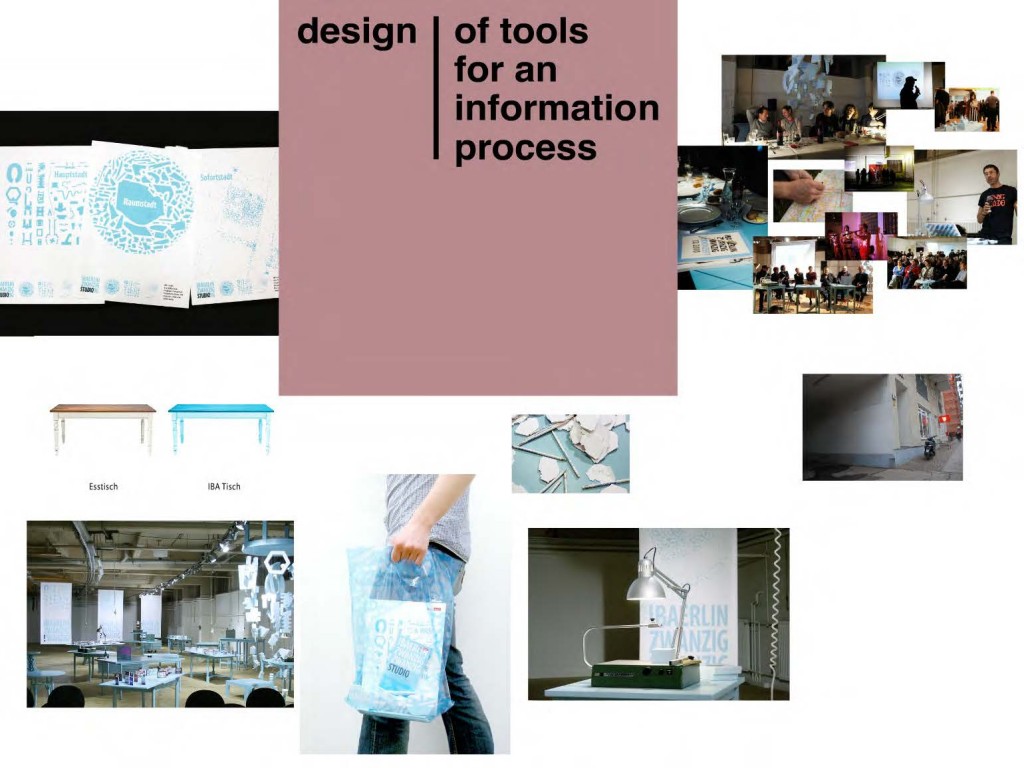
Another exemplary project might be the planned International Building Exhibition IBA Berlin 2020, for which we designed the first public interface in the ongoing process. To enable this process, we designed artefacts that were not ends in themselves, but means to an end, such as the flexible and modular IBA Workshop platform and simple tools such as pens, sticky notes and plastic bags (to carry information away with). In the temporary IBA Workshop in the airport Tempelhof, new information was jointly generated, information that is then being fed back into the process to spark off new ideas and so on and so on.

I would like to close this list of information frenzy, with the yearbook project where I am designing a book with school children. To enable them to do this I am designing a process to inform and end up learning as much as I am teaching. To find out more about this lively experience please refer to Co-designing a Yearbook.
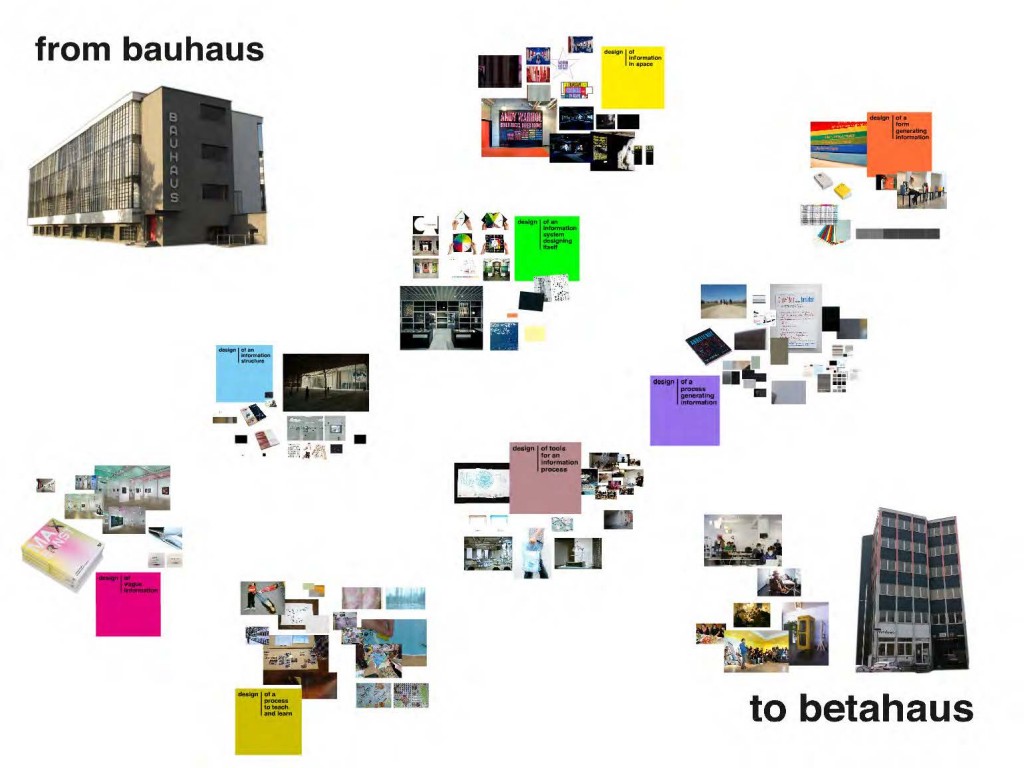
Having come full circle and finding myself back in the present, I can claim that looking at my work from an information angle proved fruitful. The filter allowed me to see more clearly how parameters, objectives and outcomes have changed and shaped my design perspective over the years. Not only the way information is created, handled and offered has changed in my projects, but also my working conditions as a designer. My latest endeavors all share some characteristics: fuzzy timespans with no clear start and finish, a collaborative process that has to be constantly adapted to meet its objectives and an evolving definition of the desired end result, a result that often triggers more questions rather than give definite answers.
I am not alone. All around me I see designers moving from commissions to questions. I see people reinventing our profession, working in changing constellations on self professed beta versions. Which brings me to the other haus that starts with a small b and to the end of my musings.

The betahaus is a co-working space in Kreuzberg that rents out desk space to people like me – people that don´t like to work alone at home. Just like the Bauhaus almost a hundred years ago, it is a platform that encourages people from different disciplines to meet and work together on projects. It uses tools like weekly breakfasts, open office hours and maker weekends to facilitate exchange and create synergies. Like the famous school it is as well a place of learning.
But unlike the historic Bauhaus, you don´t have to master the „Grundkurs“ first. The betahaus is open to everyone and the roles of teachers and students in the betahaus are interchangeable: one day somebody will show you how to create interactive textiles, the next day you can teach them screen printing or send your kids to a hackathon. The betahaus exports its concept to other cities and countries, creating an „international style“ of co-working that is designed to be shaped and defined by its users. The “beta” in the name is programmatic, the betahaus sees itself as an institution in flux, a dynamic prototype where ideas are tested, refined or thrown out again.
The betahaus seems to me very much a child of its time – just like me.
Andy Warhol. Other Voices, Other Rooms, Subjektiv. Documentary Film in the 21st century, Max Ernst. Dream and Revolution, Wilhelm Meister exhibition, IBA Berlin 2020: scenography by chezweitz&roseapple · Wilhelm Meister Bücherkörper curated by Rose Epple
Talk for Shapeshifters on March 13, 2013 at Beursschouwburg, Brussels.

